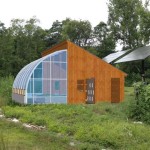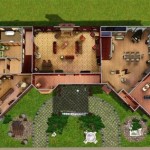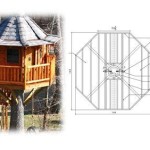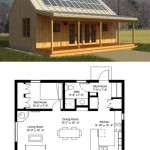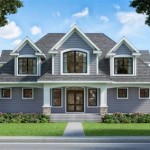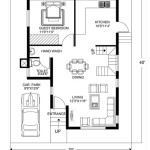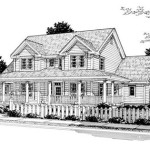Small Design Home Plans
Small design home plans offer a compelling alternative to larger, more traditional homes. These plans prioritize efficient use of space and affordability without compromising on style or comfort. They cater to a variety of lifestyles, from young professionals and minimalist individuals to downsizing retirees and those seeking vacation homes.
One of the key advantages of small home designs lies in their affordability. Smaller footprints translate to lower construction costs due to reduced material needs and labor. This cost-effectiveness extends beyond the initial build, impacting ongoing expenses such as property taxes, utilities, and maintenance. Homeowners can allocate saved resources towards higher quality materials, energy-efficient appliances, or other desired features.
Efficiency is another hallmark of small home plans. Architects and designers skilled in this niche carefully consider every square foot, maximizing functionality and minimizing wasted space. Multi-functional furniture, built-in storage solutions, and open floor plans contribute to creating a sense of spaciousness within a compact footprint. Smart design choices can make a small home feel surprisingly large and accommodating.
Sustainability is often a driving factor for those choosing smaller homes. Reduced material consumption during construction inherently lowers the environmental impact. Furthermore, smaller spaces require less energy to heat, cool, and illuminate, resulting in lower utility bills and a smaller carbon footprint. These homes lend themselves well to incorporating eco-friendly features like solar panels, rainwater harvesting systems, and composting solutions.
There's a wide array of architectural styles available for small home designs, reflecting individual tastes and preferences. From modern and minimalist to traditional and rustic, there's a style to suit every aesthetic. Popular choices include tiny homes on wheels, cottage-style homes, and compact bungalows. Many architects specialize in customizing small home plans to meet specific needs and site conditions.
The design process for a small home often involves careful consideration of lifestyle and functional requirements. Working closely with an architect or designer is crucial to ensure the layout optimizes available space and caters to the homeowner's specific needs. This collaborative process involves discussing priorities, defining must-have features, and exploring creative solutions to maximize functionality.
Before embarking on a small home project, thorough research and planning are essential. Analyzing local zoning regulations, building codes, and permit requirements is crucial to ensure compliance and avoid potential delays or complications. Understanding the specific regulations governing small homes in the chosen location will help streamline the building process.
The location of a small home plays a significant role in its overall design and functionality. Whether it's a rural setting, a suburban neighborhood, or an urban environment, the surrounding landscape and climate influence design choices. Factors such as sun exposure, prevailing winds, and proximity to amenities are carefully considered during the planning phase.
Choosing the right materials for a small home is essential for both aesthetics and durability. Selecting high-quality, sustainable materials contributes to the longevity and energy efficiency of the home. Factors such as insulation, roofing materials, and exterior cladding play a crucial role in regulating temperature and minimizing maintenance requirements.
Interior design for small homes focuses on creating a sense of spaciousness and maximizing natural light. Light color palettes, strategic placement of mirrors, and minimalist décor contribute to an open and airy feel. Incorporating functional furniture with built-in storage solutions helps maintain a clutter-free environment.
Landscaping for small homes can enhance the overall appeal and create a seamless transition between indoor and outdoor living spaces. Utilizing vertical gardening techniques, incorporating small patios or decks, and choosing low-maintenance plants can maximize outdoor enjoyment without overwhelming the limited space.
Technology plays an increasingly important role in optimizing the functionality of small homes. Smart home systems can control lighting, temperature, and security features, enhancing energy efficiency and convenience. Integrating technology seamlessly into the design can significantly improve the overall living experience.
Financing a small home project often involves exploring different options tailored to this specific niche. Lenders specializing in small home construction or renovation loans can offer competitive rates and flexible terms. Understanding the available financing options is essential for securing the necessary funds and managing the project budget effectively.
The growing popularity of small home designs reflects a shift towards simpler, more sustainable living. These homes offer a unique opportunity to prioritize functionality, affordability, and environmental consciousness without compromising on comfort or style. Careful planning, creative design solutions, and a focus on maximizing space are key to creating a successful small home project.

Small Home Plan With 3 Bedrooms House Floor Plans Bungalow Exteriors

Pin On One Bedroom House Plans

Small House Designs Shd 2024003 Pinoy Eplans Blueprints Layout Plans Floor

Small House Plans And Design Ideas For A Comfortable Living

Small House Design 2024001 Pinoy Eplans Floor Plans

Small Home Design Live 3d

Tiny House Floor Plans With Lower Level Beds Tinyhousedesign Design

Affordable Home Design Efficient Floor Plans

Small House Plans Popular Designs Layouts

Tiny House Floor Plans With Lower Level Beds Tinyhousedesign


